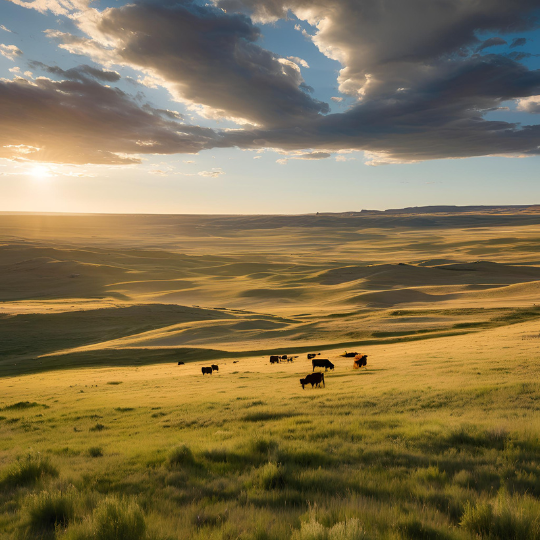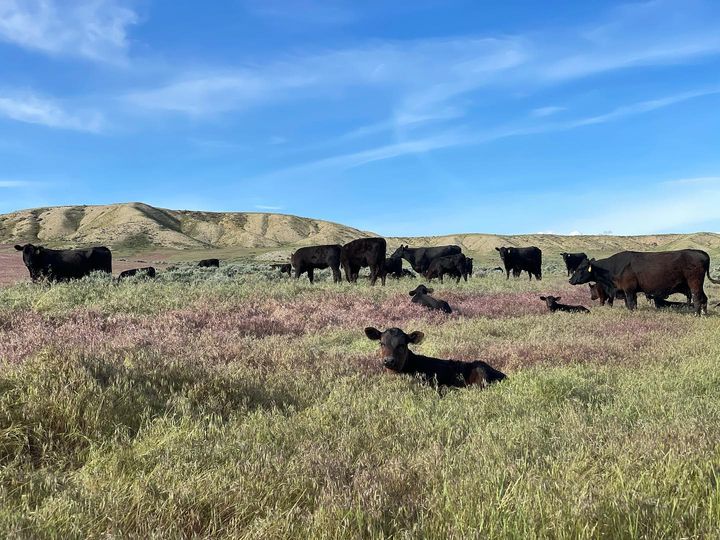Regenerative farming holds the key to our planet’s future. We are the last generation to inherit a world on the brink of collapse. Standing at the edge of a rapidly closing window of opportunity, we face the consequences of decades of neglect. The power to reshape the future or witness the planet’s undoing lies in our hands. Our choices will define the legacy we leave behind. Whether humanity thrives or fades into history.
Ranching Redefined: A Regenerative Farm Story
Do you think you have what it takes to ranch in Wyoming on land that goes as far back and wide as the eye can see? Let me introduce you to one family’s plight to build no ordinary cattle operation; it’s one powered by regenerative agriculture and driven by a sustainable vision. This is not merely raising beef; it’s regenerating the land and securing the future.
From Tradition to Transformation: A Rancher Taking the Road Less Traveled
This rancher hadn’t always practiced regenerative farming. They started, as most in the industry did at the time, using standard practices handed down from previous generations: raising cattle with traditional methods, as well as planting and rotating crops. But something was missing. The void was in the soil. Instead of continuing down the same path, they embraced regenerative farming. What does that mean? The rancher threw away the typical playbook. Gone are the days of relying solely on wheat, corn, or alfalfa. Instead, a variety of native grasses and pastures were sown to produce an all-natural buffet for the animals year-round. This diversity keeps the land alive and balanced with the animals. Recreating the free-roam grazing of the bison. The cattle feed the land just as the land feeds them.
Farm to Fork: A Culinary Experience
The next phase of this journey was connecting consumers and restaurants with the beef almost directly. Like any new venture, there were hurdles. Selling to restaurants proved bumpier than expected, and the food business was a test of patience and adaptability, with its complex logistics and ever-changing demands. Consider it a high-stakes foodie adventure, with much more at stake than just dinner! But the rancher persevered, and their beef business became known not just for its quality, but for its focus on sustainable, community-based agriculture. Check it out for yourself here.
What Makes Regenerative Farming Different
So what makes this rancher’s method “regenerative?” One important tactic is adaptive grazing, where cattle are rotated through different pastures, encouraging them to graze on a wide variety of plants. Even the less palatable ones. Think of it as getting kids to eat all their veggies! Over time, this varied grazing restores the ecosystem’s balance and promotes natural plant growth, regenerating the land. And don’t forget the dung beetles. Yes, dung beetles! When regenerative practices were implemented, these little creatures returned, playing a vital role in the ecosystem. Their presence is a sign that the soil is coming back to life.
The Lightbulb Moment: Understanding Ag
The rancher credits regenerative agriculture consultants, Understanding Ag, with providing a critical turning point. Once their insights were applied, everything clicked. The relationship between soil health, plant diversity, and cattle welfare made sense. The ranch transformed into a model of regenerative agriculture. But it wasn’t just about improving soil health. It was about restoring the land for future generations. They adopted the mindset: “We are borrowing the planet from future generations,” challenging the idea of “bigger, faster, more” and focusing on long-term sustainability.
A Legacy of Resilience
For this rancher, the story is personal. It’s a legacy of family resilience and commitment. In a world where rising costs often push people toward shortcuts, this operation remains firm in its belief that relationships with consumers and the land are what truly matter. It’s a reminder of a time when trust, integrity, and community were the real currency.
Healthy Soil, Healthy Lives: Regenerative Farming Bigger Picture
What makes regenerative agriculture so important? It’s not just about producing high-quality beef (though that’s definitely a bonus!). At its core, regenerative farming recognizes the immense value of healthy soil. Studies show that meat produced through these methods is more nutrient-dense (read more about that here) than conventionally farmed products. It’s a win-win: healthier food and a brighter future. Every time you buy beef from regenerative operations, you’re supporting a movement focused on healing the land. It’s about participating in something much bigger than just yourself.
Conclusion: Why Regenerative Farming Matters
This isn’t just a story about raising cattle; it’s about the future of our planet and how we rethink food, farming, and sustainability. Regenerative agriculture isn’t a trend, it’s an essential evolution. Every small shift in practice, from lush green pastures to the return of dung beetles, contributes to a larger, more sustainable picture. The vision is clear: a future where the land thrives, where resources aren’t just used but replenished. It’s a story of resilience, patience, and commitment to the long game. We’re not just nourishing ourselves with every bite of beef from regenerative farms. We are investing in the future. Get yours today and taste what Nutrient-Dense Regeneratively raised beef tastes like for yourself.
Furthermore, if you would like to know more about Understanding Ag I have provided you a link. And if you are concerned about what food or drink you put into your body. I would also like you to check out Fine Wines. Where wines are not adulterated with fillers, preservatives, and poisons just to make a buck for the Big Conglomerates.
Come Join us today! Get added to our FREE online e-mail list to stay in the know when we add New Treasures and Gems to this site!
And believe me, we are searching, testing, and adding All the time and you don’t want to miss out!




